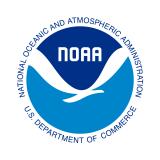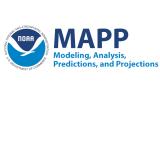Implementation of the Noah Land Surface Model Upgrades in the NCEP Climate Forecast System (CFSv2)

The objective of this project was to transition and infuse the recent developments of the Noah land surface model (Noah LSM) into operation for NOAA’s National Centers for Environmental Prediction (NCEP) to improve the skill and reliability of NCEP seasonal climate predictions of precipitation, temperature, and land-surface hydrological variables, such as soil moisture, runoff, and snowpack. The improvement in prediction skill was to be accomplished by means of improved representation of land surface processes and land-atmosphere interactions in the NCEP operational global and regional climate prediction systems, including their companion land data assimilation systems.
Climate predictability on intraseasonal to interannual timescales is largely determined by slow variations of the ocean and land-surface states. This project aimed to improve the understanding and modeling of land-surface processes through a focus on better understanding of land-atmosphere interactions and related hydrometeorological physics. Upgrades in the Noah LSM, coupled to the NCEP Climate Forecast System, will be the parameterizations for cold season snow processes, surface thermal roughness, groundwater and runoff, vegetation canopy layer, and dynamic vegetation.
This project was part of the Modeling Analysis, Predictions, and Projections (MAPP) Program and National Integrated Drought Information System (NIDIS) supported Drought Task Force I.
For more information, please contact Amanda Sheffield (amanda.sheffield@noaa.gov).
Research Snapshot
Results of This Research
- This study implemented the NCEP Global Land Data Assimilation System (GLDAS) in the NCEP Climate Forecast System (CFS) Reanalysis (1979–2010) and the NCEP operational Climate Forecast System version 2 (CFSv2) (2011–present).
- The retrospective GLDAS version 2 provided an enhanced global land surface climatology reference and enhanced land surface initial conditions for the coupled CFS/GLDAS seasonal prediction experiments to assess the historical, current, and predicted global hydroclimate anomalies and drought information and to support the MAPP Drought Task Force research activities.
- This study led to the development of the Noah-Multiparameterization Land Surface Model (Noah-MP LSM), and showed an improvement in seasonal prediction via infusion of the latest development in land physics by parameterizations.
Peer-reviewed publications resulting from this research include:
- Meng, J., R. Yang, H. Wei, M. Ek, G. Gayno, P. Xie, and K. Mitchell. 2012. The Land Surface Analysis in the NCEP Climate Forecast System Reanalysis. Journal of Hydrometeorology 13, 1621–1630.
- Yang, R., M. Ek, and J. Meng. 2015. Surface Water and Energy Budgets for the Mississippi River Basin in Three NCEP Reanalyses, Journal of Hydrometeorology 16, 857–873.


